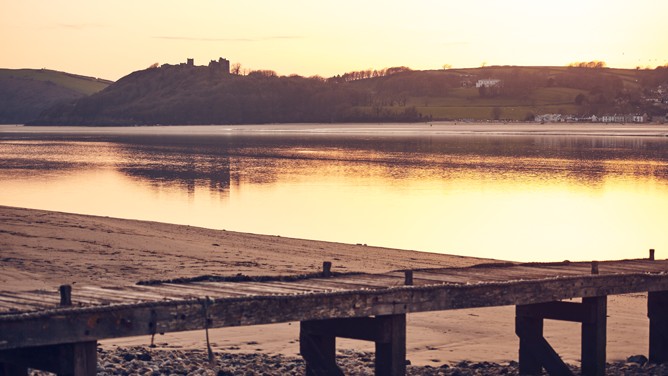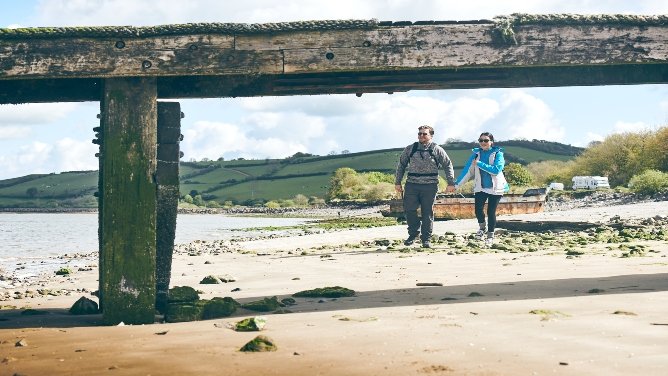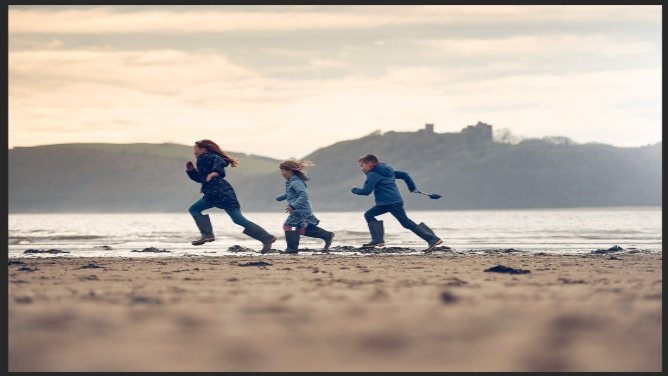Just about 10 miles south of Carmarthen, at the mouth of the River Tywi, Ferryside was historically a fishing village at the heart of the Carmarthen Bay cockle picking industry. As the name suggests, it was also a medieval crossing point, linking Kidwelly to Llansteffan. In 2018, the new Glansteffan ferry service resurrected the 1,000-year-old crossing after a 70-year absence.
Although only having a population of 850 – curiously - the village has its own railway station. This is, in part, a legacy of Brunel’s vision that passengers would be able to travel on a single ticket from London Paddington to New York, stopping only to change from train to steamship at the terminal in Neyland, in neighbouring Pembrokeshire. These days, however, the only trunks you’re likely to see people carrying from the trains are the sort that are worn on the beach.
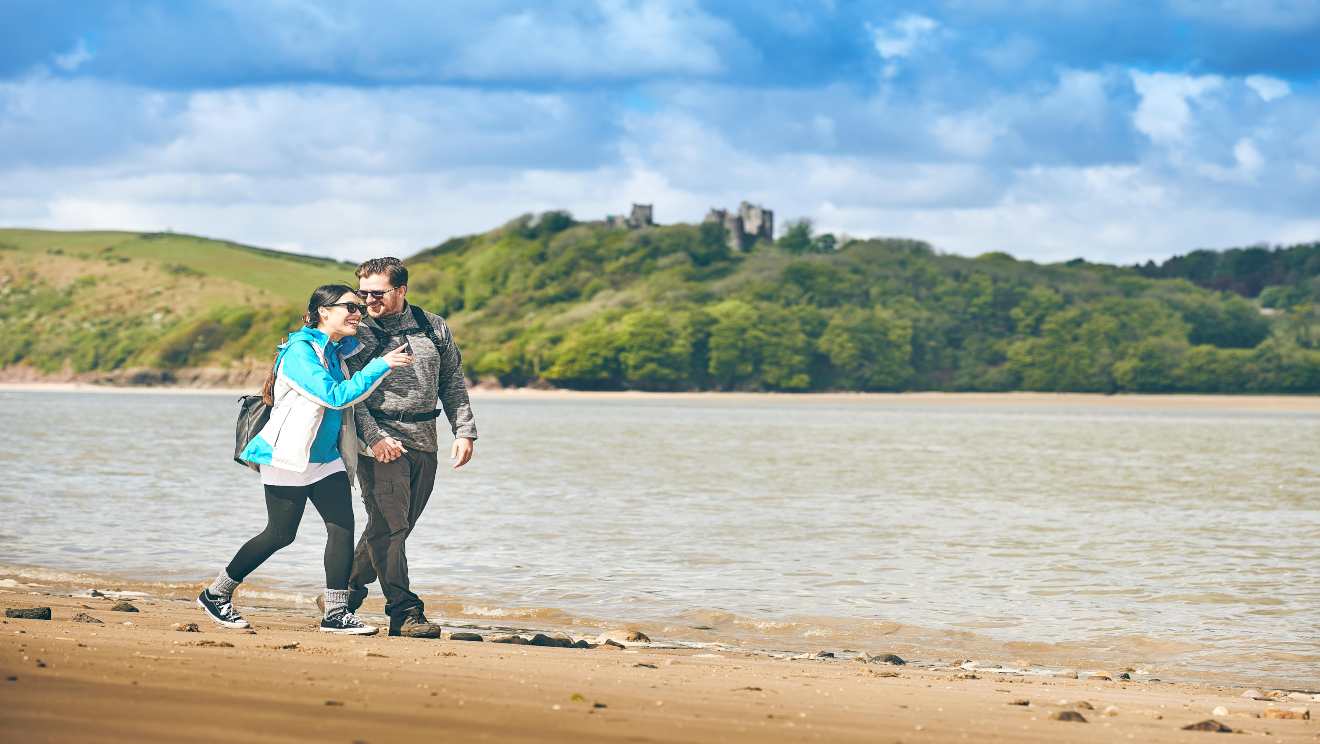
Cross-Tywi traffic
It’s believed that the Ferryside – Llansteffan ferry crossing dates back as far as 1170 and provided an important link, both for transporting goods across the estuary and carrying pilgrims heading for St Davids. The service stopped running in 1948, but was resurrected in 2018. Of course, a 21st-century ferry service requires a 21st-century boat and, as the service is tidal, this comes in the form of Glansteffan, an amphibious craft specifically designed to deal with the rising and falling tides, with retractable, hydraulic-driven wheels.
Ferry services between Ferryside and Llansteffan generally operate at the beginning and end of each operating day, with 45-minute pre-bookable trips of the estuary running in between.
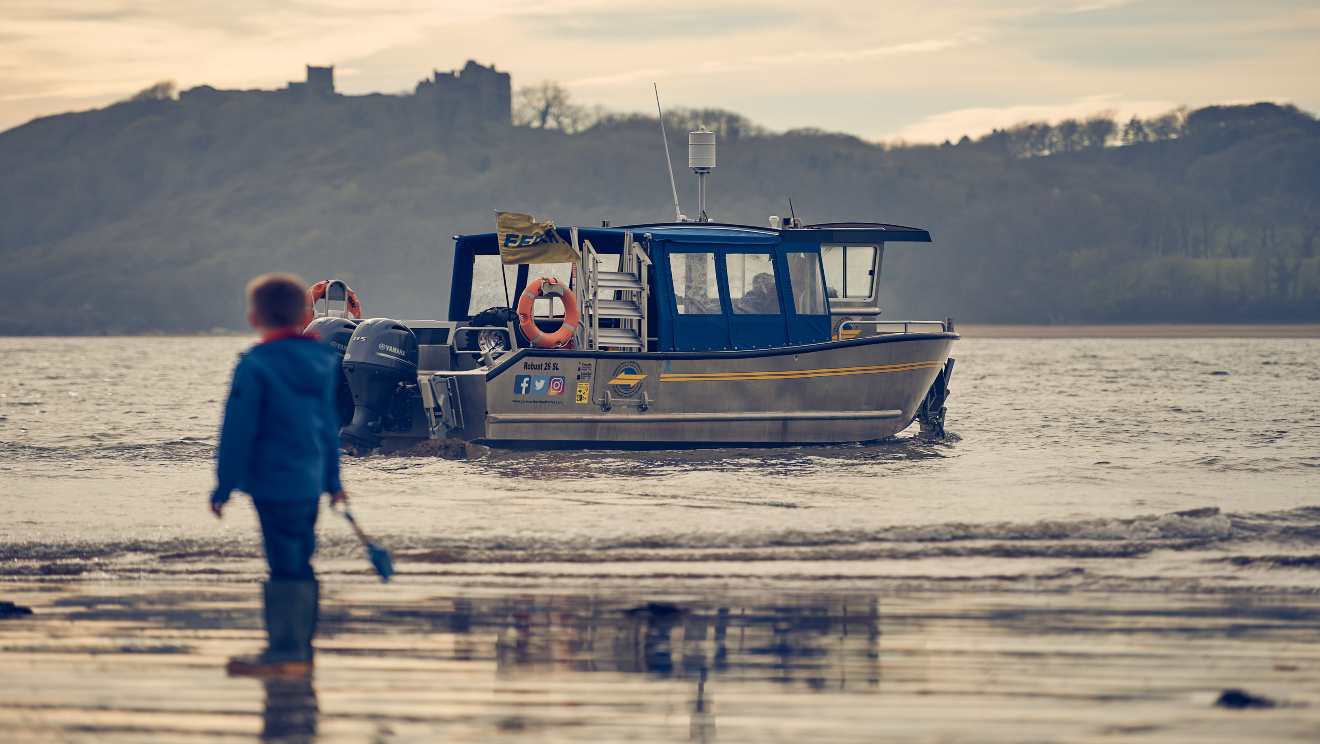
A bite to eat
Traeth Coffee is a charming new café with views across the river Towy, located beside Ferryside Railway Station – close enough to pop to while you’re waiting for your train. Whether you’re looking for a quick lunchtime snack or a coffee and cake there are plenty to choose from. Popular creations include the carrot cake and lemon drizzle or the gluten-free lime and coconut cake.
Traeth coffee is cosy, inviting and buzzing with conversation and dog friendly too. A great new addition to the seaside village.
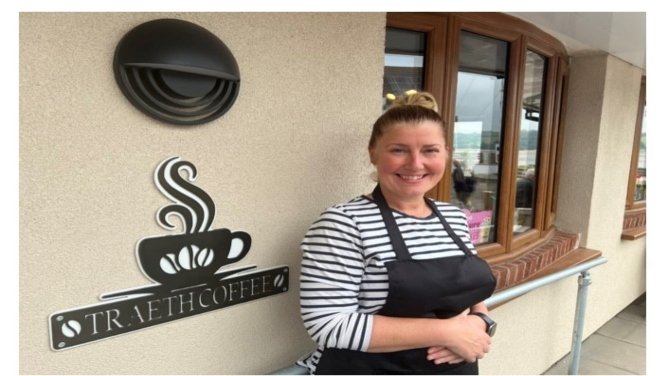
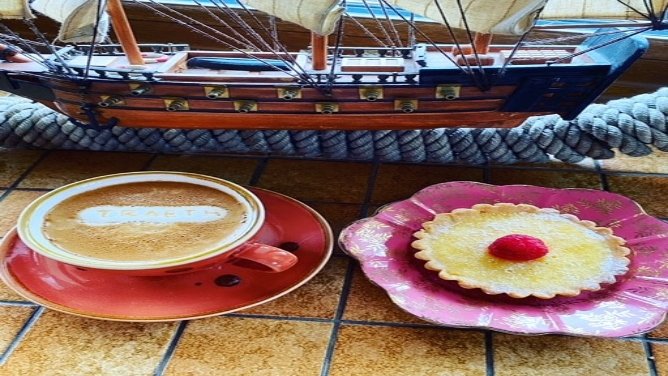
Sea food and eat it
Although the bulk of the industry has died out in Ferryside, some cockling and fishing by traditional ‘seine’ nets continues. The combination of wide, shallow beaches and an abundance of seafood in Carmarthen Bay provides an ideal opportunity to forage for your own lunch. One note of caution: Always go foraging with a local expert. Not only will they know the nature of the tides, they’ll also know what is and isn’t safe to eat.
Craig Evans of Coastal Foraging has been exploring these shorelines since he was a kid and on one of his coastal foraging experiences (in the company of his excitable Golden Retriever, Llew), you’ll discover how to find fare such as prawns, mussels, cockles, wild samphire, sea anemones and scarlet elf cup mushrooms. The reward for your efforts will be your very own zero-waste, organic lunch on the beach.
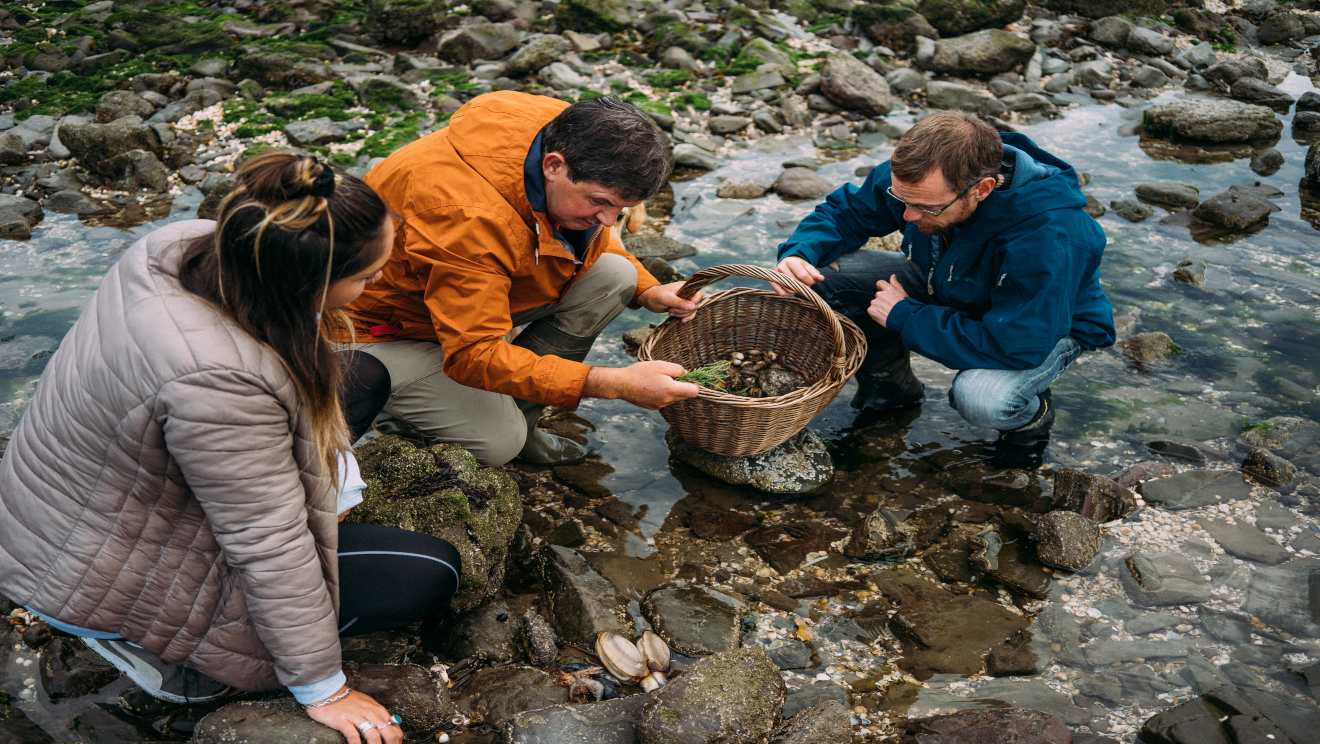
Life savers
A lifeboat was first installed in Ferryside in 1835 and there are accounts of great heroism shown during rescues over the years. The wreck of the Craigwhinnie is still visible at low tide in the Gwendraeth Estuary – the Ferryside lifeboat went out twice to her when she ran aground in 1899, saving 18 lives.
Over 185 years later, the Ferryside inshore lifeboat is still available 24/7 to respond to 999 and radio distress calls. Like the majority of lifeboat services, it’s staffed entirely by local volunteers and as an independently-run service, is funded by donations from businesses and the community.
If the doors to the station are open, why not pop in and say hello - and make a donation to this vital coastal service. The crew can often be seen on the water practising drills on a Wednesday evening and Sunday afternoon.
Old masters
Arrange a visit to Tim Bowen Antiques and the range of Welsh furniture, folk art and paintings on display will give you a fascinating insight into Welsh life, history and culture. Tim’s fascination with Welsh country furniture began when he saw a Welsh stick chair being sold in the auction room where he worked. Having found his calling, he was gallery manager at County Antiques in Kidwelly for many years, before he and his wife Betsan finally opened their own gallery in 2005.
Lost village
To the south of Ferryside lies the medieval village of St Ishmael’s, in which only the church remains standing. It’s thought that the rest of the village was lost to the shifting sands and tides. Some of the remains of houses were uncovered and investigated by archaeologists in 2010; more were exposed after a storm in 2017. They are sometimes seen at low tide.
Insider tips
The must do: A sunrise or sunset trip on the Glansteffan to the 3 corners of the Tywi Estuary
The photo stop: The driftwood sculpture of a fisherman and his catch, entitled Cyfeillgarwch (Friendship), opposite The Ferry Cabin
The surprising story: How lifeboatman David Jones, known as ‘Dai Pilot’, aged 71, saved 17 members of the crew of the German ship, SV Paul
The best walk: The Ferryside/Iscoed circular walk, that takes in marshland wildlife and Bronze Age standing stones
The refreshment stop: The newly-reopened Ferry Cabin, where Trip Advisor reviewers claim some of the best fish and chips in Wales are served.
